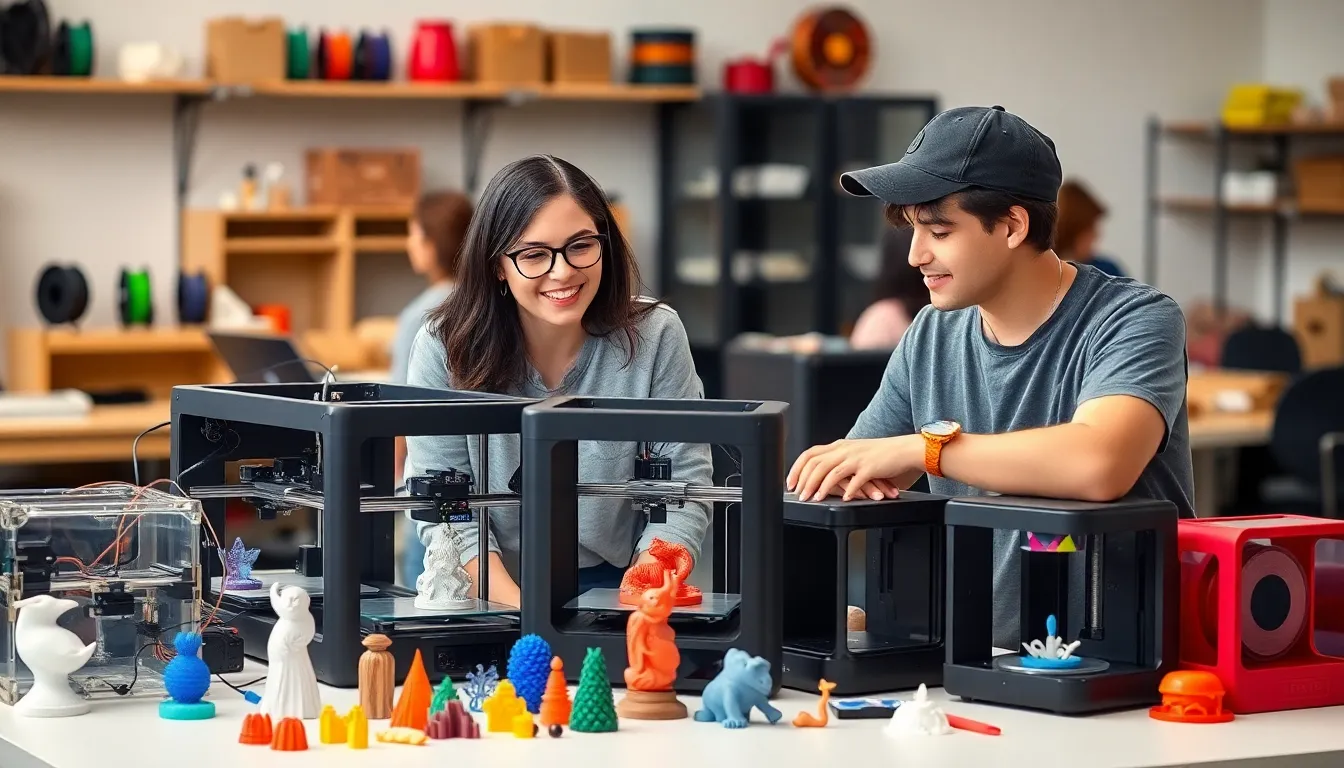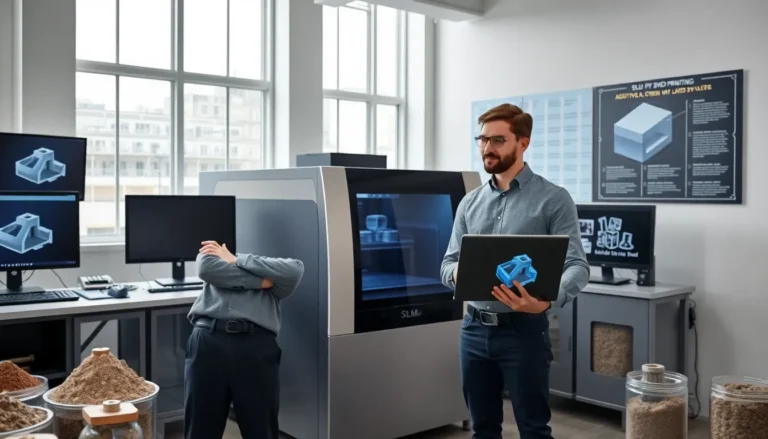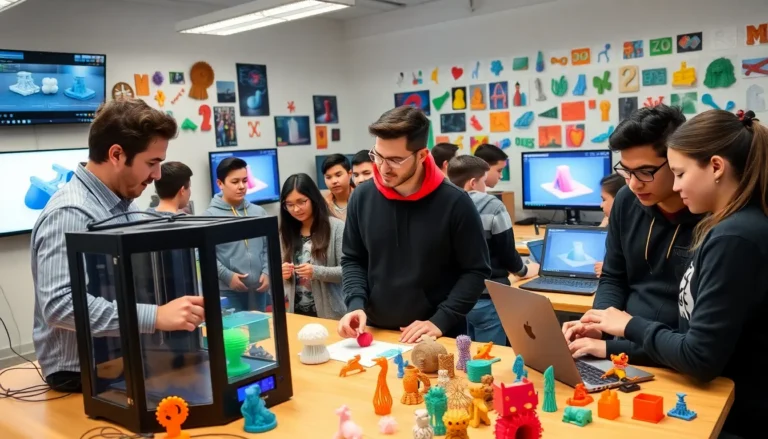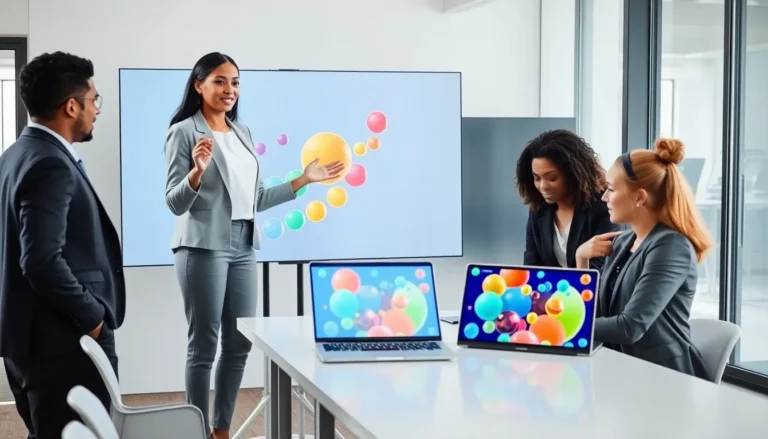Table of Contents
ToggleIn recent years, 3D printing has transformed from a niche technology into a mainstream tool, sparking creativity and innovation across various industries. As the demand for accessible and cost-effective solutions rises, many individuals and small businesses are discovering the benefits of affordable 3D printing options. This shift is opening doors to new possibilities, allowing creators to turn their ideas into reality without breaking the bank.
Affordable 3D printing solutions offer more than just lower costs; they empower users to experiment and iterate quickly. With advancements in technology and materials, it’s now easier than ever for hobbyists and entrepreneurs alike to dive into the world of 3D printing. This article explores some of the best budget-friendly options available, helping readers find the perfect fit for their projects and aspirations.
Overview of Affordable 3D Printing Solutions
Affordable 3D printing solutions revolutionize access to this technology, making it available to a broader audience. Many options cater to various budgets and project requirements, enabling schools, hobbyists, and small businesses to leverage 3D printing without substantial financial strain.
- FDM Printers: Fused Deposition Modeling (FDM) printers represent the most common and cost-effective type. Prices for reliable models range from $200 to $500. These printers use thermoplastic filaments and suit beginners and general-purpose projects.
- Resin Printers: Resin printers, while typically requiring a higher initial investment, have become more affordable, with many models available under $300. They produce high-resolution prints, making them ideal for detailed prototypes or intricate designs.
- DIY Kits: Many individuals choose DIY kits for their customizable nature and lower price points. Kits range from $150 to $400 and require assembly, allowing users to learn about 3D printing mechanics while creating functional printers.
- Material Accessibility: The variety of available materials affects overall costs. Filaments for FDM printers, like PLA and ABS, are accessible for as little as $20 to $40 per kilogram. Resin printers typically use more expensive photopolymer resins, ranging from $50 to $100 per liter.
- Online Services: Online 3D printing services provide cost-effective alternatives for users without printers. These services allow individuals to upload designs and receive printed items, often at competitive rates based on size and material requirements.
- Community Resources: Local maker spaces and community workshops often provide access to shared 3D printers at low-cost membership fees. This model allows users to avoid significant initial investments while gaining access to higher-end equipment.
These affordable solutions democratize 3D printing, making it feasible for anyone to explore creativity and innovation in their projects.
Key Features to Consider
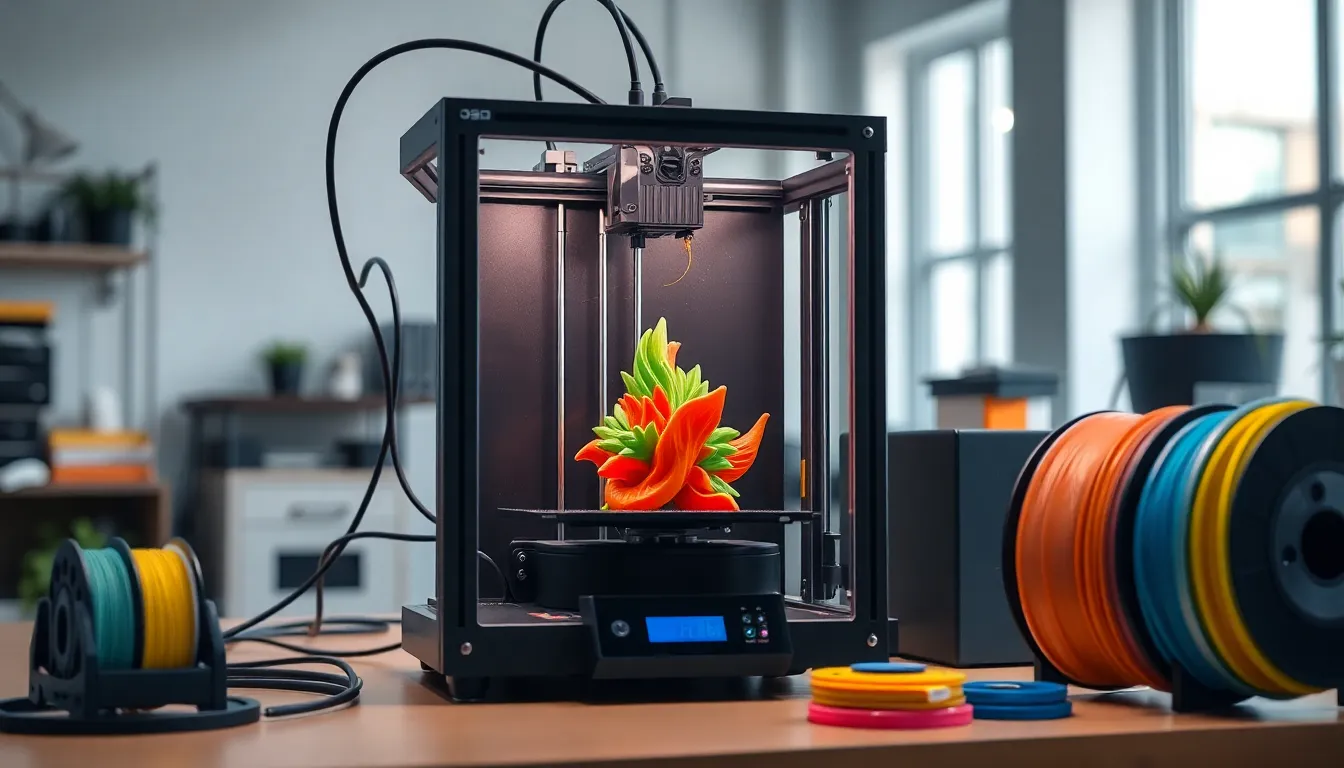
When selecting an affordable 3D printing solution, several key features influence effectiveness and user satisfaction. Evaluating build volume, print quality, and material compatibility ensures the chosen printer meets specific project requirements.
Build Volume
Build volume refers to the maximum size of objects a printer can produce. Smaller printers suitable for personal use may offer build volumes around 200mm x 200mm x 200mm. Mid-range options provide larger volumes, often reaching 300mm x 300mm x 400mm. Consider project specifications when selecting a printer; larger volumes accommodate more extensive designs without print failures.
Print Quality
Print quality significantly impacts the finished product’s appearance and functionality. Key indicators include layer resolution and detail capability. Most affordable printers deliver layer resolutions between 100 and 300 microns. Users prioritizing high-detail models should opt for printers closer to 100 microns. Understanding print quality ensures the end product meets professional or personal standards.
Material Compatibility
Material compatibility affects design flexibility and application variety. Most affordable FDM printers support PLA and ABS filaments, with some accommodating PETG. Budget-friendly resin printers often work with standard and specialty resins. Check the printer specifications for compatible materials, as this knowledge influences project direction and design possibilities.
Popular Affordable 3D Printers
Several popular affordable 3D printers cater to different needs and budgets, making it easy for users to find suitable options. Below are details on entry-level and mid-range models.
Entry-Level Models
Entry-level models offer excellent value for beginners, with prices typically between $200 and $400. Notable examples include:
- Creality Ender 3: Priced around $200, this FDM printer offers a build volume of 220mm x 220mm x 250mm and supports various filaments like PLA and ABS. It’s known for its reliability and community support.
- Anycubic i3 Mega: Available for approximately $300, this model features a 210mm x 210mm x 205mm build volume and comes with a touchscreen interface. Its ease of assembly attracts many newcomers to 3D printing.
- Monoprice Select Mini V2: At about $250, this compact printer boasts a build volume of 120mm x 120mm x 120mm and is fully assembled out of the box. It’s ideal for small projects and beginners.
Mid-Range Options
Mid-range options, priced between $400 and $800, offer enhanced features suitable for more serious hobbyists. Some popular models include:
- Prusa i3 MK3S+: Costing around $750, this printer has an impressive build volume of 250mm x 210mm x 210mm and excels in print quality with a layer resolution as fine as 50 microns, making it a favorite among enthusiasts.
- Artillery Sidewinder X1: Priced at about $400, this FDM printer features a 300mm x 300mm x 400mm build volume and direct drive extruder. It supports a variety of filaments and is known for its large build size and affordability.
- Anycubic Photon Mono: This resin printer, typically priced around $200, offers a build volume of 130mm x 80mm x 165mm and provides high-definition prints. Its speed and detail make it a strong contender for those focused on intricate designs.
Cost Analysis of Affordable 3D Printing Solutions
Cost analysis plays a crucial role in understanding the long-term value of affordable 3D printing solutions. Two primary factors to consider are the initial investment and operating costs.
Initial Investment
Initial investment involves the purchase price of the 3D printer and any necessary accessories. Fused Deposition Modeling (FDM) printers typically range from $200 to $500, with excellent entry-level options like the Creality Ender 3 and Anycubic i3 Mega. Users spending between $150 and $400 on DIY kits gain a customizable experience while learning about 3D printing mechanics. Resin printers generally cost more, with many models accessible under $300, catering to those prioritizing detail in their work. Additional expenditures often include tools, replacement parts, and a basic supply of materials, which can fluctuate based on the chosen printing technology.
Operating Costs
Operating costs include expenses related to materials and maintenance. FDM filament prices range from $20 to $40 per kilogram, with standard materials like PLA and ABS being widely available. Resin costs, depending on quality, fall between $50 and $100 per liter. Users might incur ongoing expenses for print bed adhesives, cleaning supplies, and replacement parts, particularly if utilizing low-cost equipment. Online 3D printing services and community resources, such as maker spaces, can also present lower-cost alternatives, enabling shared access to printers and materials, which mitigates some operational costs for users without personal equipment. Understanding these factors allows individuals and small businesses to assess the true financial commitment of adopting 3D printing technology.
Tips for Choosing the Right 3D Printer
- Define the purpose: Identify the main use for the 3D printer, whether for prototyping, hobby projects, or small-scale production. This helps narrow down options that meet specific requirements.
- Consider build volume: Evaluate the maximum size of objects intended for printing. Personal-use printers typically offer around 200mm x 200mm x 200mm, while mid-range models can reach 300mm x 300mm x 400mm.
- Assess print quality: Review layer resolution capabilities, which significantly impact final output. Most affordable printers provide resolutions between 100 and 300 microns, affecting the level of detail achievable.
- Check material compatibility: Determine the types of materials required for projects. Most affordable FDM printers support common filaments such as PLA and ABS, while budget-friendly resin options work with standard or specialty resins.
- Examine ease of use: Research user-friendly features like touchscreen interfaces, automatic bed leveling, and reliable software for model preparation. These attributes enhance the overall printing experience.
- Evaluate community support: Look for established brands with active user communities. Access to online forums and troubleshooting resources can prove invaluable for troubleshooting and learning.
- Analyze ongoing costs: Factor in material expenses and maintenance needs alongside initial investment. Understanding these costs helps ensure sustainable use of the printer over time.
- Read reviews: Investigate user reviews and expert opinions to gauge long-term performance and reliability. Reliable feedback assists in making informed purchasing decisions.
Affordable 3D printing solutions are transforming how individuals and small businesses approach design and innovation. With options ranging from budget-friendly FDM printers to accessible resin models and DIY kits, creativity is no longer limited by financial constraints.
These advancements empower users to experiment and iterate on their ideas with ease. By understanding the key features and costs associated with various printers, anyone can find the right fit for their needs.
As the landscape of 3D printing continues to evolve, embracing these affordable solutions opens the door to endless possibilities in creativity and production.

